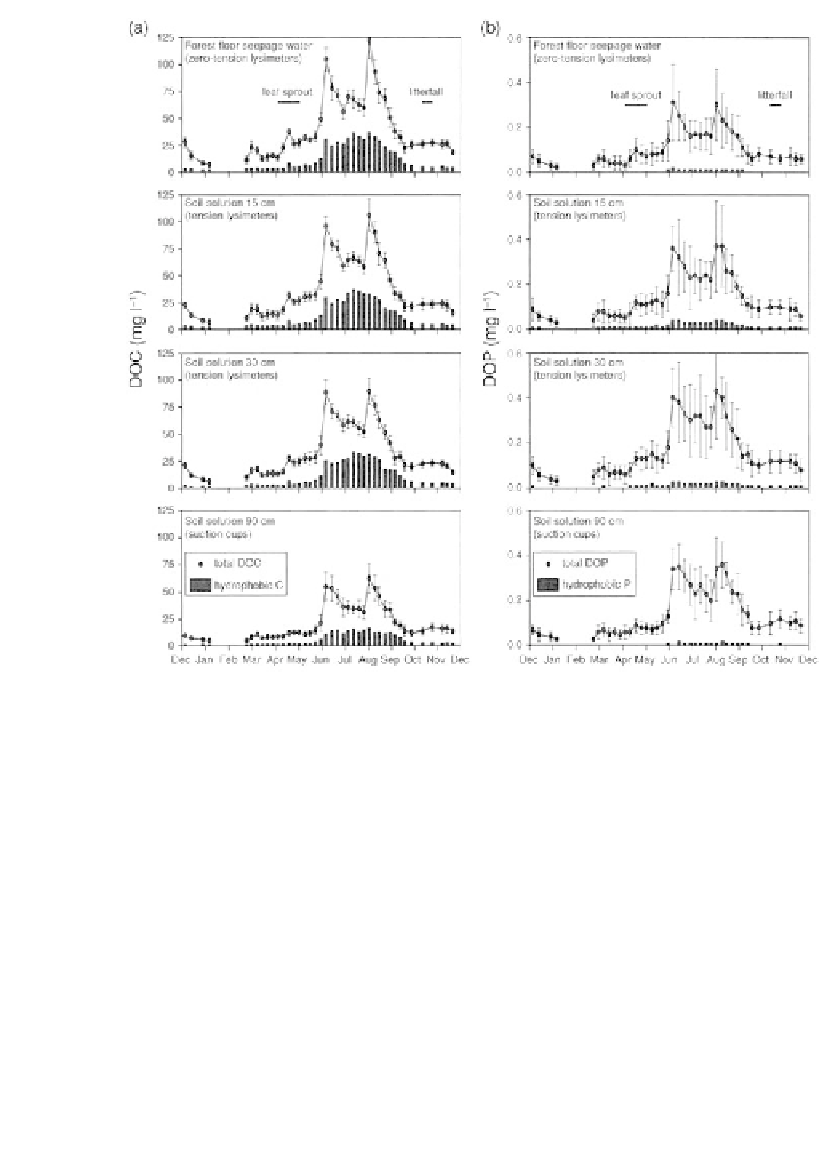Agriculture Reference
In-Depth Information
Fig. 4.4.2.
Dissolved organic carbon (DOC) and phosphorus (DOP) concentrations in forest
floor seepage water and mineral soil porewater of Lithic Rendolls covered with a European beech
(Fagus sylvaticaL.) forest during the period December 1997-November 1998. The error bars
indicate the standard deviation of at least three samples.
Larger proportions of lignin-derived hydrophobic DOC (Table 4.4.2)
and of signals of alkyl C (0-50 p.p.m.) and aromatic C (110-160 p.p.m.) in
the
13
C-NMR spectra of DOM in the forest floor seepage water in summer
and autumn indicated enhanced decomposition (Fig. 4.4.2a). The DOC in
winter and spring was concentrated in the hydrophilic fraction (Fig. 4.4.2a)
and consisted mainly of O-alkyl C (50-110 p.p.m.) representing carbohy-
drates. We assume that DOM occurring during the winter and spring is due
to leaching of soluble material from fresh beech litter and microbial debris.
The
31
P-NMR spectra of forest floor leachates (Fig. 4.4.3b) in winter
indicated that inorganic P was mainly as orthophosphate (~6.2 p.p.m.) as
there was little orthophosphate monoester P (4.1-5.6 p.p.m.). The P con-
centrations in spring were too low for recording spectra. During summer
and autumn 1998, signals of organic P forms dominated the spectra.











Search WWH ::

Custom Search